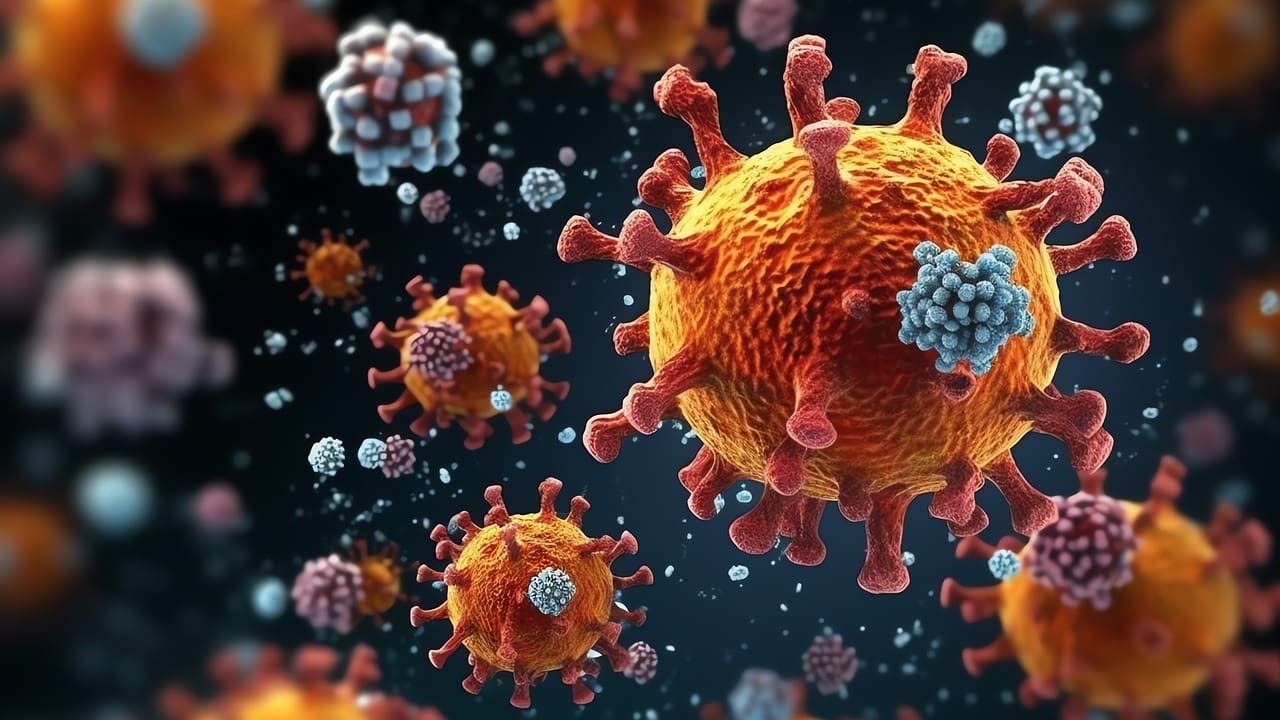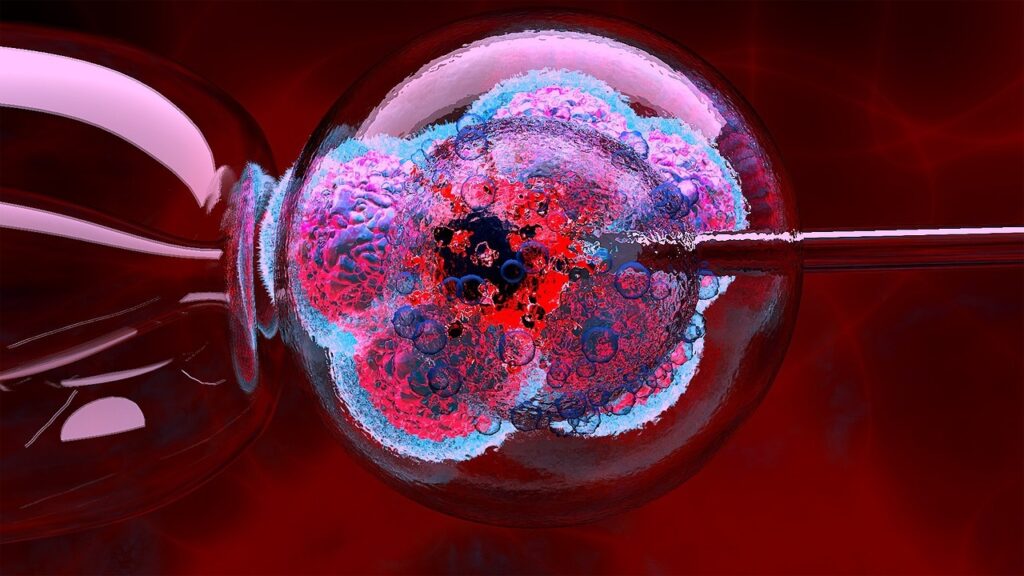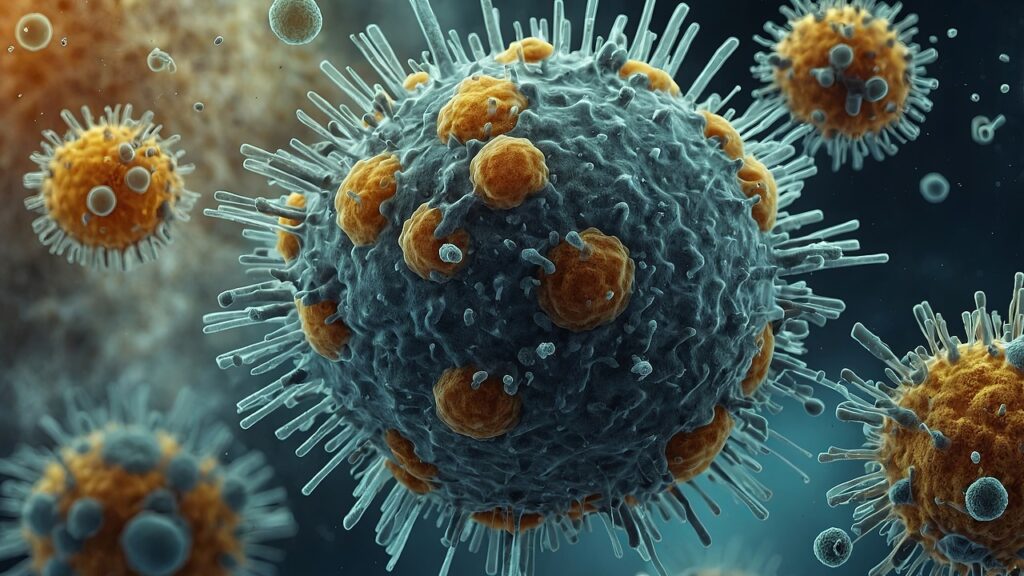
Multipotent hematopoietic cells are key to our blood and immune system health. They can turn into different blood cell types. These cells live in the bone marrow and are vital for making blood cells all our lives.
They go through a process called hematopoiesis. This turns them into various blood cell types. It makes sure our body gets the blood cells it needs.
Knowing how these cells work is important. It helps us understand how blood cell production is controlled. It also shows how some blood disorders happen.
At Liv Hospital, we use our knowledge in regenerative medicine and transplantation. We aim to give our patients the best care possible.

Hematopoietic stem cells are at the core of blood production. They can renew themselves and change into different types of blood cells. These cells are key to the hematopoietic system, making all blood cell types throughout our lives.
Hematopoietic stem cells (HSCs) are special stem cells that create all blood cell types. They can renew themselves and turn into cells that become mature blood cells. HSCs are multipotent, meaning they can make both myeloid and lymphoid lineages. This includes red blood cells, platelets, and immune cells.
HSCs have two main abilities: self-renewal and differentiation into various cell types. This is vital for keeping blood cell balance and meeting blood cell needs.
| Characteristics | Description |
|---|---|
| Self-Renewal | Ability to maintain the stem cell population |
| Multipotency | Capacity to differentiate into multiple blood cell lineages |
| Differentiation | Ability to give rise to myeloid and lymphoid progenitors |
The discovery of HSCs was a big step in understanding blood cell production. Early studies in the mid-20th century started to show HSCs’ role in hematopoiesis. Key experiments involving bone marrow transplantation proved the existence of cells that can repopulate the hematopoietic system.
Research has kept going, revealing how HSCs self-renew and differentiate. Advances in biology have helped us understand HSCs better. We’ve found specific markers and regulatory pathways.

Hematopoietic stem cells (HSCs) have a special ability to keep themselves going. This is key for keeping the stem cell pool alive throughout our lives. It helps them balance growing new cells with keeping themselves ready to do it again.
The way HSCs renew themselves is complex. It involves both what’s inside the cell and what’s around it. Important players include genes, signals, and how genes are turned on or off. For example, the Wnt/β-catenin pathway helps HSCs to keep renewing themselves.
| Mechanism | Description | Role in Self-Renewal |
|---|---|---|
| Wnt/β-catenin signaling | Regulates cell fate decisions | Promotes self-renewal |
| Notch signaling | Maintains stem cell pool | Supports self-renewal |
| Epigenetic modifiers | Regulates gene expression | Maintains stem cell identity |
Many things can affect how well HSCs renew themselves. Age, what’s around them, and their genes are big factors. As we get older, HSCs renew themselves less well. This can make our blood-making abilities weaker. Also, stress or damage can hurt their ability to renew, showing how important a good environment is.
The bone marrow has a special place for hematopoietic stem cells. This place, called the niche, affects how these cells grow and work. It’s key for helping HSCs stay healthy and turn into different blood cells.
The bone marrow microenvironment, or HSC niche, has many cell types. These include osteoblasts, endothelial cells, and mesenchymal stem cells. They make important factors like cytokines and chemokines. These factors help keep HSCs balanced between growing and changing into different cells.
HSCs talk to the cells in their niche, getting signals that shape their future. For example, osteoblasts help control HSCs by touching them and making special factors. This talking is vital for keeping the blood system in balance.
Learning how HSCs and their niche interact is key for new treatments. These treatments aim to change HSC behavior for health benefits.
Hematopoiesis is how our body makes different blood cells from stem cells. This process is key for making blood cells all our lives.
Blood cell development has several stages. It starts with stem cells. These cells turn into progenitor cells, then into specific blood cells like red and white blood cells, and platelets. The right balance of these cells is vital.
Hematopoiesis is controlled by many factors. Cytokines, growth factors, and transcription factors help blood cells grow and change. If these controls fail, it can cause blood problems. So, knowing about hematopoiesis is important for finding new treatments.
To understand hematopoietic stem cells, knowing medical terms and abbreviations is key. The field of HSC research is complex. It uses many terms with specific meanings.
“Hemopoetic,” “hematopoietic,” and “haematopoietic” are terms you’ll see with HSCs. These words are the same, but spellings vary by region. “Hematopoietic” is used in American English, while “haematopoietic” is British English. “Hemopoetic” is less common but recognized too. They all talk about how blood cells are made.
It’s important to know these differences for clear communication in healthcare. The main idea is the same, no matter the spelling.
| Term | Spelling Variation | Regional Preference |
|---|---|---|
| Hematopoietic | American English | United States |
| Haematopoietic | British English | United Kingdom, Australia |
| Hemopoetic | Less common | Variable |
“HSC” means Hematopoietic Stem Cells, key for blood cell production. In clinics, HSCs are vital for hematopoietic stem cell transplantation. This treatment helps with blood disorders and cancers.
Learning about HSC medical abbreviation is essential. It helps healthcare pros talk clearly. It also keeps patients informed about their treatment.
Hematopoietic progenitor cells are key players in the process of making blood cells. They start as hematopoietic stem cells (HSCs) and turn into different types of blood cells. These cells can grow into many types of blood cells but can’t keep growing like HSCs.
Hematopoietic progenitor cells and stem cells are different. Stem cells can keep growing forever, but these cells can’t. Key differences include:
There are two main types of hematopoietic progenitor cells: myeloid and lymphoid. Myeloid progenitors make red blood cells, platelets, and more. Lymphoid progenitors turn into T cells, B cells, and natural killer cells. These cells help keep the right balance of blood cells in our bodies.
The hematopoietic lineage is a complex process. It creates the diverse range of blood cells we need to survive. This process starts with hematopoietic stem cells. They then differentiate into various cell types, including both myeloid and lymphoid lineages.
The myeloid lineage produces important cell types. These include monocytes, macrophages, neutrophils, basophils, eosinophils, erythrocytes, dendritic cells, and platelets. These cells are key for functions like oxygen transport, immune response, and blood clotting.
Erythrocytes carry oxygen around the body. Neutrophils help fight infections.
The lymphoid lineage focuses on the immune response. It produces T cells, B cells, and natural killer (NK) cells. These cells are vital for our immune system’s ability to adapt and fight off pathogens.
‘The lymphoid lineage is fundamental to our immune system’s ability to adapt and respond to new challenges.’
The development of lymphoid cells is carefully regulated. This ensures a wide range of immune cells. They can recognize and fight many different antigens.
In summary, the hematopoietic lineage includes both myeloid and lymphoid lineages. Together, they produce a wide variety of blood cells. These cells are essential for our health and fighting diseases.
Multipotent hematopoietic stem cells are key to studying blood cell growth and diseases. They can turn into all blood cell types, making them vital for research. We’ll look at how they compare to other stem cells.
HSCs can grow into many blood cell types. This skill is important for keeping our blood cells healthy and ready for our body’s needs. Multipotent HSCs can make both myeloid and lymphoid lineages. These then become different blood cells, like red blood cells and immune cells.
Multipotent HSCs stand out when compared to other stem cells. Unlike pluripotent stem cells, they can only turn into blood cells. But, they can self-renew and grow into many blood cell types. This makes them very important for making blood cells.
| Stem Cell Type | Differentiation Potential | Self-Renewal Capacity |
|---|---|---|
| Multipotent HSCs | Multiple blood cell lineages | High |
| Pluripotent Stem Cells | Any cell type in the body | High |
| Unipotent Stem Cells | Single cell type | Limited |
Hematopoietic stem cell transplantation (HSC transplant) has changed how we treat blood cancers and disorders. It uses stem cells to fix the bone marrow, making healthy blood cells again.
There are different HSC transplants, like autologous, allogeneic, and syngeneic. Autologous transplants use the patient’s own stem cells. Allogeneic transplants come from a donor. Syngeneic transplants use stem cells from an identical twin. Each has its own use and benefits, based on the patient’s needs and donor availability.
The HSC transplant process has several steps. First, there’s pre-transplant conditioning, which might include chemotherapy or radiation. This clears out the old bone marrow. Then, stem cells are given to the patient. They go to the bone marrow and start making new blood cells.
Research shows HSC transplantation can greatly improve survival for blood cancer patients. Survival rates at ten years vary based on the disease, patient age, and other factors. For example, leukemia or lymphoma patients might see long-term remission after transplant, with survival rates up to 50% or more at ten years.
We keep working to make HSC transplantation better through research and new transplant methods.
Hematopoietic stem and progenitor cells are being used more to treat serious blood diseases. This change is big in how we treat blood-related conditions.
Hematopoietic stem cell transplantation (HSCT) is key in treating some leukemias and lymphomas. It replaces a patient’s sick blood system with healthy stem cells. This can cure some patients. Improved survival rates have been seen in those who get this treatment.
Hematopoietic stem cell therapy is also being looked at for sickle cell disease and other blood disorders. Gene therapy is promising because it fixes the genetic problem in stem cells. Clinical trials are running to check if these treatments are safe and work well.
The field of hematopoietic stem cell therapy is growing fast. New therapies and clinical trials are starting. These include gene-edited stem cells and new ways to prepare for transplants. As research goes on, we’ll see new treatments for blood disorders.
Hematopoietic stem cell research has made big steps forward. It has given us new ways to understand blood cell growth and treat blood diseases. The future looks bright, with gene editing and regenerative medicine set to change stem cell science for the better.
Recent discoveries have shown us how hematopoietic cells work in diseases. This has opened up new ways to help patients. We’re on the path to finding new treatments for leukemia, lymphoma, and more.
The outlook for HSC research is excellent. Scientists are working on using gene editing to fix genetic problems in HSCs. This could lead to cures for inherited blood diseases. As we learn more about HSCs, we’ll see even more progress. This will help patients and change the face of HSC research.
Hematopoietic stem cells are special cells. They can make copies of themselves and turn into different blood cells. This is key for making blood cells throughout our lives.
HSCs can keep themselves going. This lets them replace themselves and stay at the right numbers.
The hematopoietic stem cell niche is like a special home for HSCs. It has different cells and factors that help HSCs work well.
Hematopoiesis is how HSCs turn into different blood cells. It’s a process with many steps and rules to make the right blood cells.
HSCs can make many blood cell types and keep themselves going. Progenitor cells are more limited and help in the process of making blood cells.
Knowing HSC terms helps doctors talk clearly. It’s important for working well together and explaining things to patients.
HSC transplantation helps treat blood diseases like leukemia. It replaces a patient’s blood system with healthy cells.
HSCs and progenitor cells help treat blood diseases. They are also being tested in new treatments and studies.
Multipotency means HSCs can turn into many blood cell types. This makes them very useful for making blood cells.
HSCs are special because they can make many blood cell types. They are key for making blood cells, making them different from other stem cells.
Subscribe to our e-newsletter to stay informed about the latest innovations in the world of health and exclusive offers!
WhatsApp us